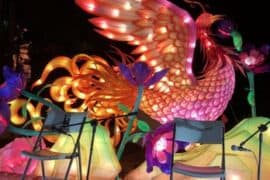Spark Curiosity with Playful Science Experiments for Kids
Hello there, super moms and dads! Are you looking to transform your home into a delightful mini-lab where curiosity blooms and learning is a joyous adventure? Well, you’re in luck! This comprehensive guide is here to escort you through a wonderland of awesome science experiments that your kids will absolutely adore!
We know that as a parent, you’re always on the lookout for activities that are not just fun, but also enriching and educational for your little ones. That is why we’ve pulled together a fantastic array of simple, yet mind-boggling experiments that will wow the socks off your young Einsteins and Curie’s-in-the-making!
Why Science Experiments are a Blast of Learning Fun!
Science experiments offer an interactive platform for children to engage with the mysteries of the world around them. By conducting these enjoyable experiments, your kiddos will develop critical thinking skills, learn science concepts, and even strengthen their motor skills. Above all, they’ll learn that science is not just confined to textbooks – it’s a living, breathing, exciting exploration!
The Ultimate Home Science Experiments for Your Young Scientists
We’ve created a list of experiments that touch upon different aspects of science, from physics and chemistry to biology and environmental science. These are designed to be safe, educational, and accessible, using mostly common household items.
1. The Dancing Raisins Experiment
A delightful introduction to the principles of buoyancy and gas, the Dancing Raisins Experiment is sure to send spirits soaring – just like the raisins themselves!
- What You Need: A clear glass, carbonated water (soda or sparkling water), and a few raisins.
- What To Do: Fill the glass with carbonated water and drop in the raisins. Watch as they sink and then dance their way back to the top!
- The Science: The carbon dioxide bubbles in the water attach to the rough surface of the raisins, lifting them up until they reach the surface, where the bubbles pop, and the raisins sink again, creating a cycle of “dancing.”
Tip: Talk to your kids about buoyancy and how it helps boats float. Can they think of where else they’ve seen things float or sink?
2. Homemade Slime – Chemistry at its Gooiest!
This experiment is hands-down a perennial favorite. It’s slime time! Be prepared for sticky hands, gleeful laughs, and endless fun as you delve into the world of non-Newtonian fluids.
- What You Need: White glue, baking soda, contact lens solution (verify it contains boric acid and sodium borate), and food coloring (optional).
- What To Do: Mix the glue and baking soda. Add a few drops of food coloring. Gradually add the contact lens solution until the mixture reaches the desired slimy consistency.
- The Science: When the boric acid in the contact lens solution interacts with the glue, it forms a stretchy, slimy substance called a polymer, which behaves interestingly under different forms of stress and strain.
Tip: This experiment is also an opportunity to talk about states of matter (solid, liquid, gas) and how some substances don’t fit neatly into these categories.
3. The Incredible Egg Drop Challenge
Put your engineering hats on for this one! The Egg Drop Challenge is not just an eggciting experiment but also a thrilling test of ingenuity and problem-solving.
- What You Need: Eggs, various materials for shock absorption and protection (straws, balloons, cotton, cardboard, etc.), a ladder or a high place to drop from.
- What To Do: The objective is to build a contraption that will protect the egg from cracking when dropped from a height. Get creative!
- The Science: This experiment introduces basic concepts in physics such as gravity, inertia, and kinetic energy. It also promotes engineering thinking to solve practical problems.
These hands-on activities are sure to pique your kids’ interest and demonstrate the cool side of science. But wait, there’s more! We’ve got a plethora of experiments lined up to keep the fun bubbling over, so stay tuned for even more amazing science escapades coming up in our guide.
Remember, the beauty of these experiments is not just in the ‘oohs’ and ‘aahs’, but in the questions they prompt and the discoveries they lead to. Who knows, you might just have a budding scientist sprouting in your midst! Let’s ignite those young minds with the thrill of science!
Stay curious, keep experimenting, and watch as your children grow in knowledge and excitement. Science is a vast universe waiting for its secrets to be unlocked, and you’re giving your kids the key!

5 Things Parents Should Know in Preparing for Experiments
Before you dive into the experiments, there are a few key things to keep in mind to ensure a safe and enjoyable experience for everyone involved:
- Safety First: Always prioritize safety. Make sure to read through the instructions of each experiment beforehand and ensure any potential hazards are addressed. Always supervise your children, especially when handling substances that require adult oversight.
- Gather Materials in Advance: To maintain the flow of excitement, have all materials ready before you start. There’s nothing like a last-minute search for supplies to stifle the enthusiasm. Plus, it teaches your kids the importance of preparation!
- Embrace the Mess: Science can be messy, and that’s okay! Set up a space where it’s fine for spills and splats to happen. Cover tables with newspapers or plastic tablecloths and have cleaning materials on hand.
- Ask Questions: Encourage curiosity by asking open-ended questions. “What do you think will happen?” “Why do you think that occurred?” This approach fosters analytical thinking and a deeper engagement with the scientific process.
- Document the Experiments: Have a camera or a journal ready for your kids to record their observations. They can draw what they see, take photos, or write down results. This not only enhances learning but also provides a wonderful keepsake of their scientific adventures.
By keeping these key points in mind, you’ll set the stage for a fantastic science experience with your kids. Now, without further ado, let us continue with more amazing experiments!
. For more information see here
Disclaimer
The articles available via our website provide general information only and we strongly urge readers to exercise caution and conduct their own thorough research and fact-checking. The information presented should not be taken as absolute truth, and, to the maximum extent permitted by law, we will not be held liable for any inaccuracies or errors in the content. It is essential for individuals to independently verify and validate the information before making any decisions or taking any actions based on the articles.




